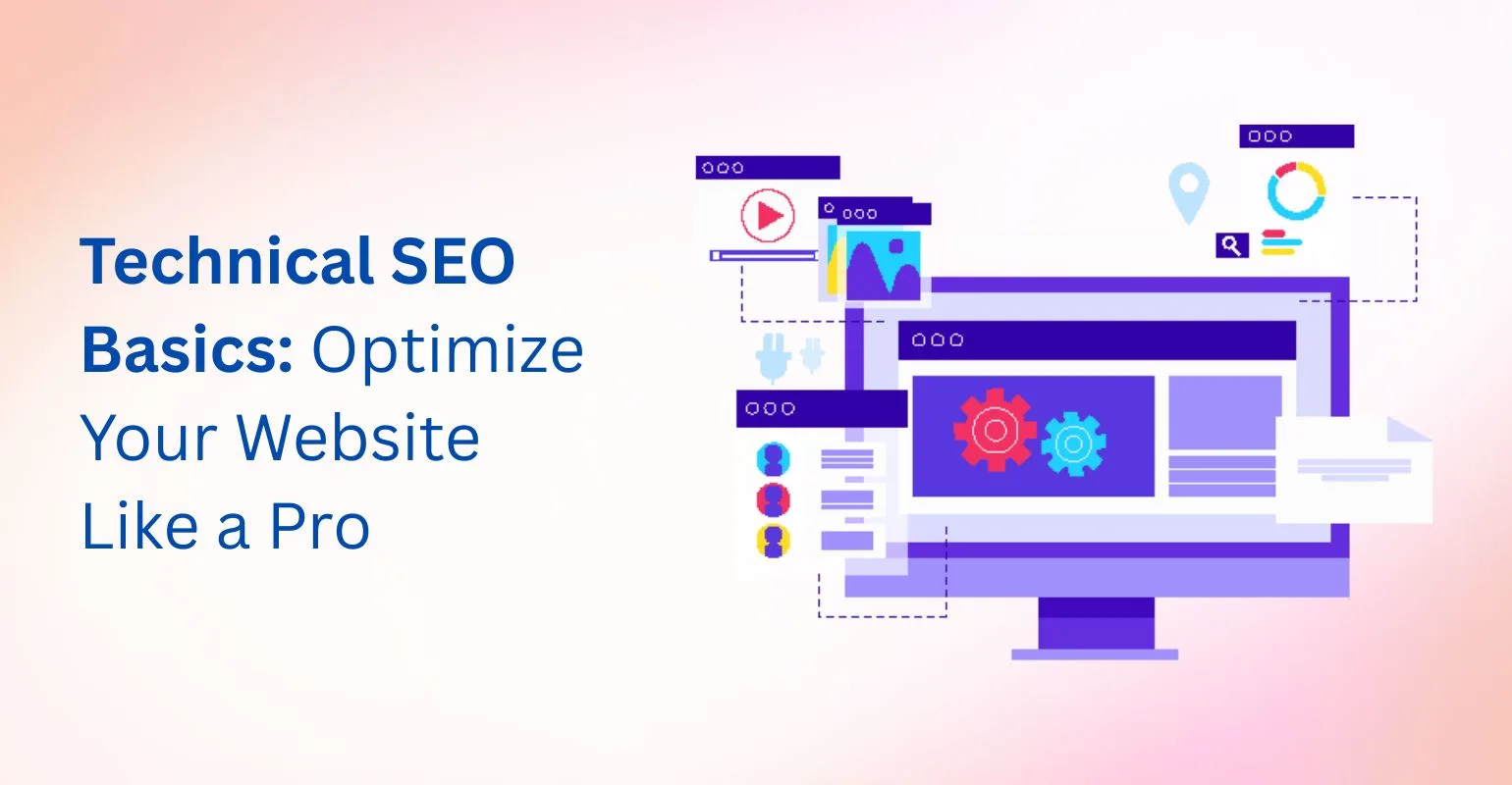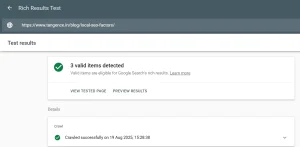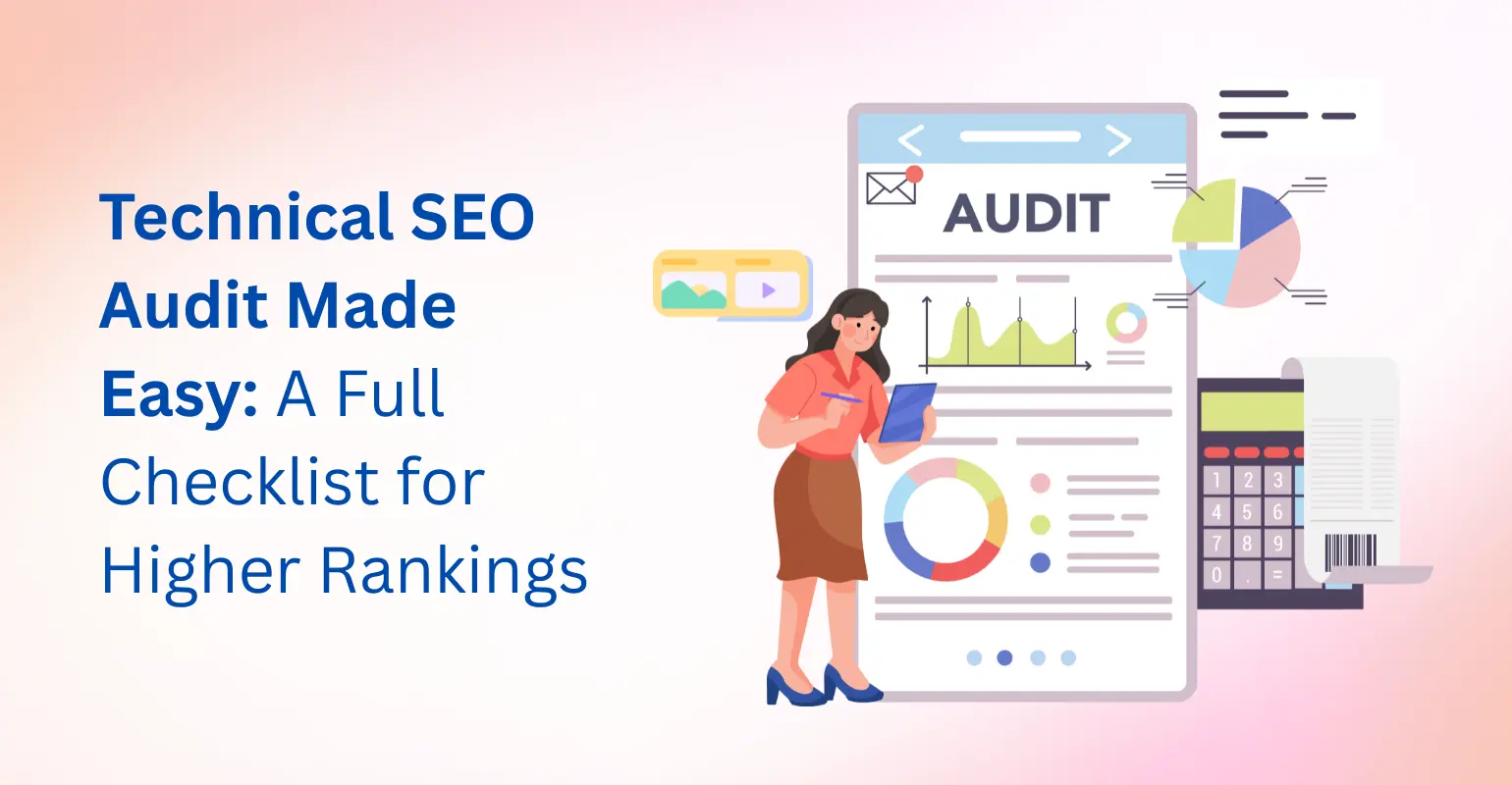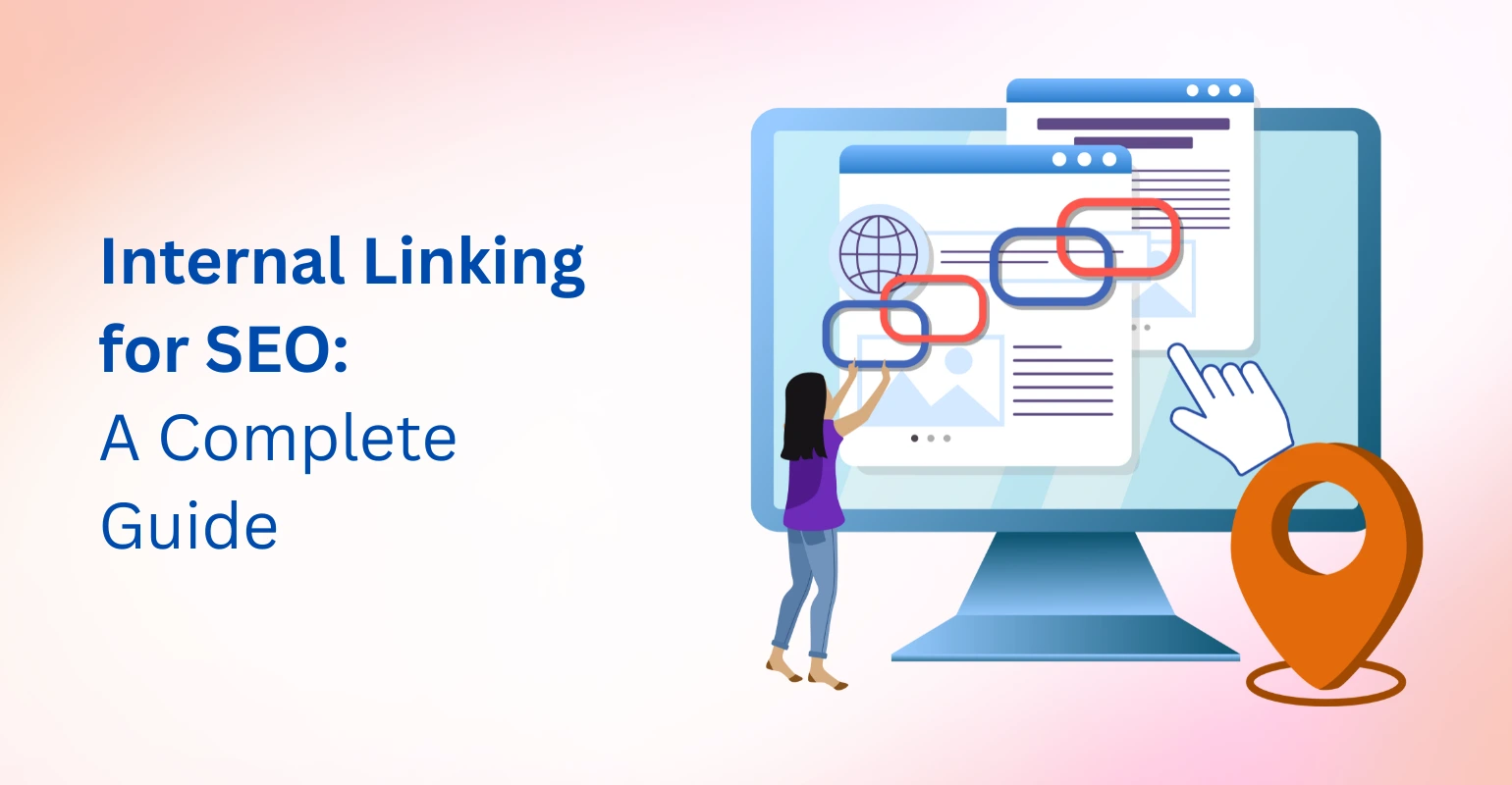blog
Technical SEO Basics: Optimize Your Website Like a Pro

If you have ever wondered why your beautifully designed website isn’t ranking even though your content is top-notch, the answer often lies beneath the surface.
Welcome to the world of technical SEO basics, the behind-the-scenes framework that determines how easily search engines can crawl, index, and understand your website.
So before you publish another blog or product page, it’s time to master the foundation. In this guide, you’ll learn what is technical SEO, why it matters, and exactly how to optimize your website step by step using real-world tactics and data-backed strategies.
Whether you’re an SEO professional or a business owner planning a new site, these technical SEO basics will help you build a stronger, faster, and more crawlable website that Google loves.
What Is Technical SEO?
Technical SEO refers to optimizing the non-content elements of your website to help search engines crawl, index, and rank your pages more effectively.
Think of it as the “engineering” side of SEO, all the invisible elements that power your site’s visibility.
For example:
- How fast your pages load
- Whether your site is mobile-friendly
- If Google can crawl and index your content correctly
- Whether your structured data is implemented properly
If you’re serious about ranking higher, understanding technical SEO basics is your first step. Because without it, even the best content can stay buried in the search results.

Image Source: Created using Napkin AI.
The Importance of Website Structure and Architecture
Your website’s structure isn’t just about design, it’s how search engines see your site. When your structure is logical, both users and crawlers can find content easily.
Here’s the truth: poor structure confuses Google. And confusion = lower rankings.
Why Site Architecture Matters
According to Google’s own documentation, websites with clear hierarchy and internal linking perform significantly better in organic visibility. Plus, a well-planned structure can help distribute link equity more efficiently across your pages.
And for technical SEO for ecommerce, this becomes even more important. You might have hundreds of product pages and without a clean structure, crawlers may never find them all.
Best Practices to Improve Site Architecture
Use a Flat Structure
Keep important pages within three clicks from the homepage. This improves crawlability and link flow.
Pro tip: Ecommerce sites should ensure category > subcategory > product hierarchy is consistent and logical.
1. Create a Clear URL Structure
URLs like /category/subcategory/product are SEO-friendly and descriptive.
2. Build Internal Links Strategically
Link between related pages using descriptive anchor text. It helps Google understand relationships between topics.
3. Add a Sitemap
An XML sitemap acts as a roadmap for search engines. Submit it via Google Search Console to ensure all pages get indexed.
When your structure makes sense, Google rewards you with faster crawling, better rankings, and happier users.
When you apply these technical SEO basics, you set your site up for stronger indexing and higher organic visibility.
Enhancing Crawlability and Indexability
You can’t rank what Google can’t crawl. That’s why improving crawlability and indexability is a top technical SEO priority.
Why Crawlability Is Crucial
Your robots.txt file and sitemap tell search engines what to access and what to skip. If they’re misconfigured, even your best content can be invisible.
According to Moz, 30% of SEO professionals face crawl-related issues that limit their site’s visibility. That’s a massive missed opportunity.
How to Improve Crawlability and Indexability
1. Audit Your Robots.txt File
Make sure it’s not blocking important pages. Check for “Disallow” lines that might accidentally hide content.
2. Use an XML Sitemap
Submit it through Google Search Console. It helps bots find new or updated content faster.
3. Fix Crawl Errors
Head to Google Search Console → Coverage report. Identify “Not found” or “Blocked” pages and fix them.
4. Strengthen Internal Links
Add links from high-traffic pages to deep content pages to help crawlers reach them easily.
5. Use Canonical Tags
Avoid duplicate content issues, especially for ecommerce product variations.
By following these steps, you’ll ensure your website is fully visible to Google and no hidden gems are left behind.
There are multiple strategies you can use to strengthen your site’s technical SEO. Here’s a quick comparison of the most impactful tactics and the tools you can use to implement them:
| Strategy | Benefit | Recommended Tool |
|---|---|---|
| XML Sitemap | Faster indexing | Google Search Console |
| Canonical Tags | Avoid duplicate content | Screaming Frog |
| Schema Markup | Rich results in SERPs | Schema.org |
| Image Optimization | Faster page load | TinyPNG / WebP |
The Necessity of Mobile Optimization
We live in a mobile-first world. And since Google officially switched to mobile-first indexing, your mobile site is your website in Google’s eyes.
So if your desktop version is perfect but your mobile version lags, you’re leaving rankings on the table.
Why Mobile Optimization Matters
Research from Google shows that 53% of mobile users abandon a site that takes longer than 3 seconds to load. And mobile usability issues can tank your engagement metrics, bounce rate, dwell time, conversions.
That’s why following mobile optimization best practices isn’t optional anymore. It’s a ranking factor.
Mobile Optimization Best Practices
1. Use Responsive Design
Your site should adapt automatically to all screen sizes from desktops to smartphones.
2. Optimize Touch Elements
Buttons and links should be easy to tap without zooming. Keep them finger-friendly.
3. Prioritize Above-the-Fold Content
Load key visuals and text quickly before the user scrolls.
4. Run Mobile Usability Tests
Use Google’s Mobile-Friendly Test and fix any flagged issues.
5. Compress Images for Mobile
Use modern formats like WebP to improve load times.
When you get mobile right, you’ll not only please users but also boost your site’s visibility across Google’s mobile search results.
Applying these mobile optimization best practices directly supports your technical SEO basics foundation and keeps users engaged longer.
Improving Website Speed and Performance
Website speed is one of the most underrated SEO factors yet it directly affects rankings, conversions, and user experience.
Think about it: every second of delay reduces conversions by up to 7%, according to Akamai.
That’s why you must optimize website speed for SEO from day one.
How Page Speed Impacts SEO
Google’s Core Web Vitals are now part of its ranking system. These metrics measure real-world user experience:
- LCP (Largest Contentful Paint) — how fast your main content loads
- FID (First Input Delay) — how responsive your site feels
- CLS (Cumulative Layout Shift) — how stable your layout is
Faster sites deliver better user satisfaction and improved rankings.
How to Speed Up Your Website
1. Compress and Optimize Images
Tools like TinyPNG or Squoosh reduce file size without hurting quality.
2. Minify Code
Clean up unnecessary spaces or comments in HTML, CSS, and JavaScript.
3. Enable Browser Caching
Let users store key files locally for faster repeat visits.
4. Use a CDN (Content Delivery Network)
Distribute your files globally for faster access across regions.
5. Measure and Monitor
Use Google PageSpeed Insights or GTmetrix to track performance.
Improving your load time by just 1–2 seconds can result in higher engagement, better conversions, and improved rankings a triple win.
Leveraging Structured Data and Schema Markup
Structured data is one of the most powerful elements of technical SEO basics. It tells Google exactly what your content means, not just what it says.
Now that your website is crawlable and fast, let’s make it smarter. Enter structured data, the hidden code that helps Google understand your content better.
Why Structured Data Matters
Structured data (a.k.a. Schema Markup) provides search engines with context. When implemented right, it enhances your listings with rich snippets, stars, FAQs, prices, and more.
According to Google, adding structured data can increase click-through rates by up to 30%.
If you’re optimizing a blog, add Article schema. If you’re managing an ecommerce site, use Product, Review, or Offer schema types. That’s technical SEO for ecommerce at its best.
Structured Data SEO Guide: How to Get Started
1. Choose the Right Schema Type
Head to Schema.org and pick one relevant to your content.
2. Add Markup Using JSON-LD
This format is Google’s recommended way to implement structured data.
3. Test Your Markup
Use Google’s Rich Results Test to make sure everything works correctly.
4. Monitor Results
In Google Search Console, look for “Enhancements” reports to track impressions and clicks for rich results.
Adding schema might seem technical, but it’s one of the easiest ways to stand out in SERPs.

Image Source: Screenshot of a Google Rich Results Test.
Technical SEO Checklist: Your Action Plan
Now that we’ve covered all the essential concepts, here’s your technical SEO checklist to make sure nothing slips through the cracks.
| Area | Key Actions |
|---|---|
| Website Structure | Use flat architecture, clean URLs, and internal linking |
| Crawlability | Optimize robots.txt, submit sitemap, fix crawl errors |
| Mobile Optimization | Apply responsive design, test usability, compress images |
| Site Speed | Optimize images, enable caching, use CDN |
| Structured Data | Add appropriate schema markup and test regularly |
| Security | Always use HTTPS |
| Indexing | Review Search Console coverage report for excluded pages |
| Core Web Vitals | Optimize for LCP, FID, and CLS |
Follow this checklist consistently, and your technical SEO foundation will be bulletproof.
Final Thoughts
Technical SEO might sound complex, but it’s really about setting up your website so search engines and users can access it without friction.
From improving crawlability and indexability, to following mobile optimization best practices, to implementing schema and speeding up your pages, each element builds a stronger foundation for your SEO success.
So, before chasing backlinks or content trends, make sure your technical base is rock solid. Because without it, everything else crumbles.
At Tangence, our SEO services help businesses build a strong technical foundation, and technical SEO strategies are at the core of what we do.
Future-proof your SEO with optimized crawlability, site speed, and structured data.
Partner with Tangence and get expert implementation that drives measurable results.
Frequently Asked Quwstions
1. What is technical SEO?
It’s the process of optimizing your website’s backend, including structure, crawlability, speed, and mobile usability so search engines can easily find and understand your content.
2. What’s the best way to improve crawlability and indexability?
Regularly audit your robots.txt file, fix crawl errors, strengthen internal links, and ensure your sitemap is up to date.
3. How important is mobile optimization for SEO?
Crucial. Mobile-first indexing means your mobile site determines your rankings. Use responsive design and test usability often.
4. How can I optimize website speed for SEO?
Compress images, minimize code, use browser caching, and test regularly with Google PageSpeed Insights.
5. What is schema markup and why does it matter?
It’s structured data that helps search engines interpret your content. Implementing it can boost visibility through rich snippets.
6. Is technical SEO only for developers?
Not anymore. Many tools like Screaming Frog, Ahrefs, and Google Search Console make it accessible to marketers and business owners.
7. How often should I audit technical SEO?
Quarterly. Frequent checks ensure your site remains optimized and catches issues before they hurt rankings.




